Tatarka 1916-17
After the 40th Infantry Division was transferred from Eastern Galicia to Bukovina on June 24, 1916, this front section became the troop’s “home”. The “Fokos Division” was primarily responsible for the defense of Kirlibaba. The attached map shows the affected front section. The trenches stretched from the western bank of the Cibó stream on the hillside of D’Ormului dominating the valley, between the Cibó and Krlibaba streams Capul was the main position, to the east it was on the slopes of the Tatarka hill. The division fought on this front section until July 30, 1917, that is, for more than a year.
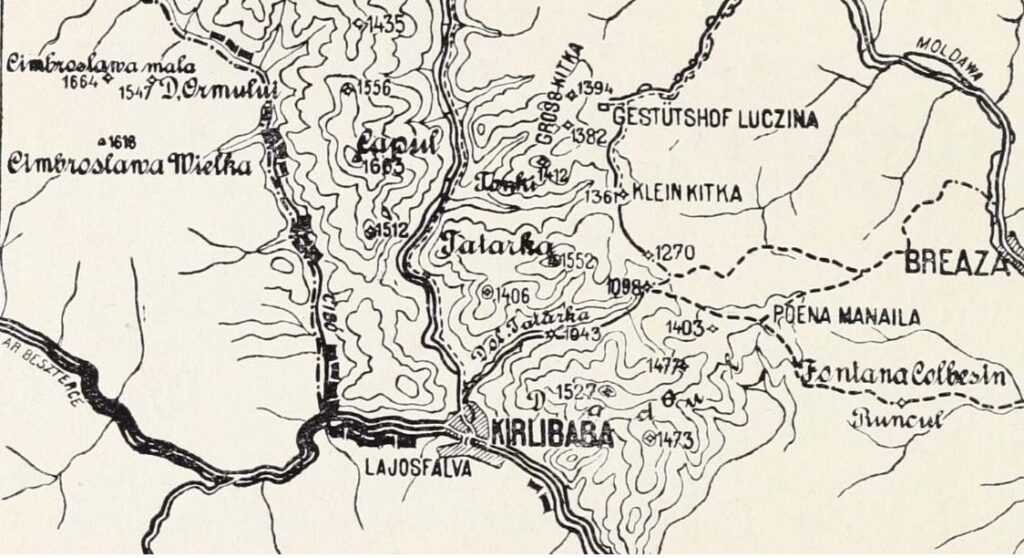
Between the weeks of battles that took place here, there were relatively calmer periods, even months in winter. But both Russian and A-H troops occasionally launched attacks to gain more favorable positions. The first such attack was undertaken by the Monarchy in order to push back the enemy who had broken into the mountains as far as possible from the frontline’s main control and logistics center, Kirlibaba. Between August 5 and 15, 1916, the division successfully attacked the D’Ormului, Cimboslawa Mala and Capul mountains in the western sector of the front. In possession of these mountains, KIrlibaba was also out of range of heavy artillery from this direction.
On August 29, the division advanced in the valley of the Dol Tatarka stream and up to the 1098 high point. Until September 17, the enemy was pushed back to the 1361 elevation point. After that, a Russian counterattack unfolded on the Tatarka mountain. The northern and eastern sides of the mountain had to be given up, and the summit was also taken by the Russians. The new position was consolidated at the 1406 altitude point of Tatarka. Here, Kirlibaba came within range of the Russian attackers’ artillery. The same thing happened on the other side of the Dol Tatarka stream, where the front moved to the Dadul 1527 high point on September 24.
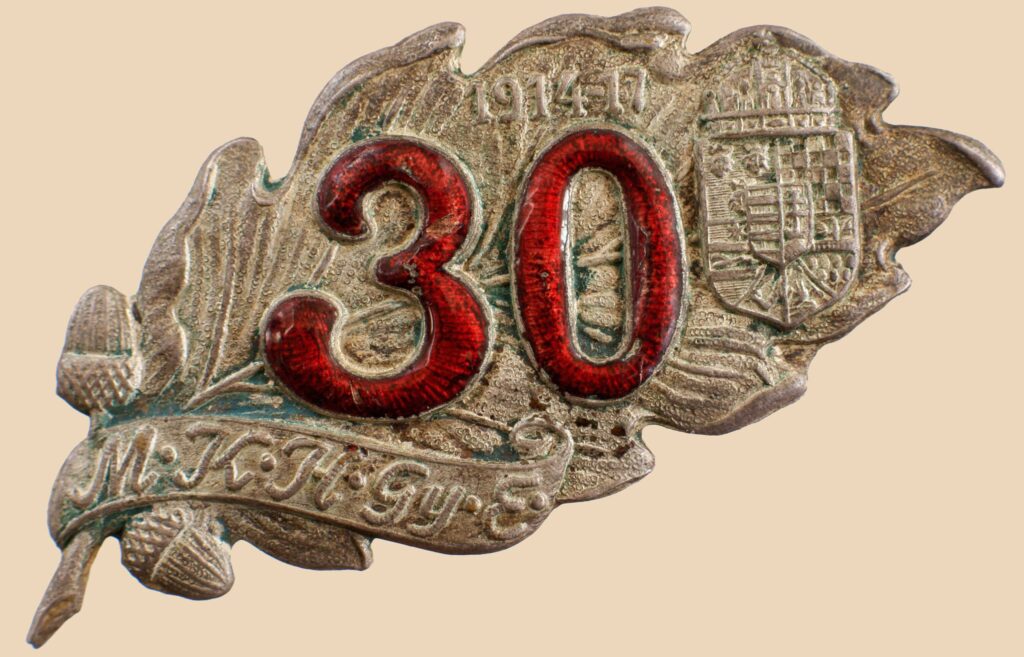
The civilian population was then evacuated from the settlement of Krlibaba, which was hit by artillery. According to recollections, the Russian artillery mainly hit Lajosfalva, located on the south bank of Aranyos Beszterce, where not a single house was left intact. Kirlibaba, lying in dead space behind the mountains, suffered less. In the fall and winter of 1916, the Russian attacks stopped, and a stalemate began. As a sign of relative calm, the division’s regiments could also think of erecting memorials. For example, the 30th Infantry Regiment built a memorial at the fork of the dirt road leading to point 1406 in the valley of the Dol Tatarka stream. It is not visible on the postcard attached to the post, but its picture was taken somewhere in that area. In the background, one can see the peak of Tatarka occupied by the Russians. I received a contemporary shot showing the Tatarka block from my friend Gábor Vásárhelyi. Many thanks for it Gábor! I am attaching the beautiful enamel badge of the 30th Honvéd infantry regiment to the post. It was produced by Márkus Berger’s company in Budapest.
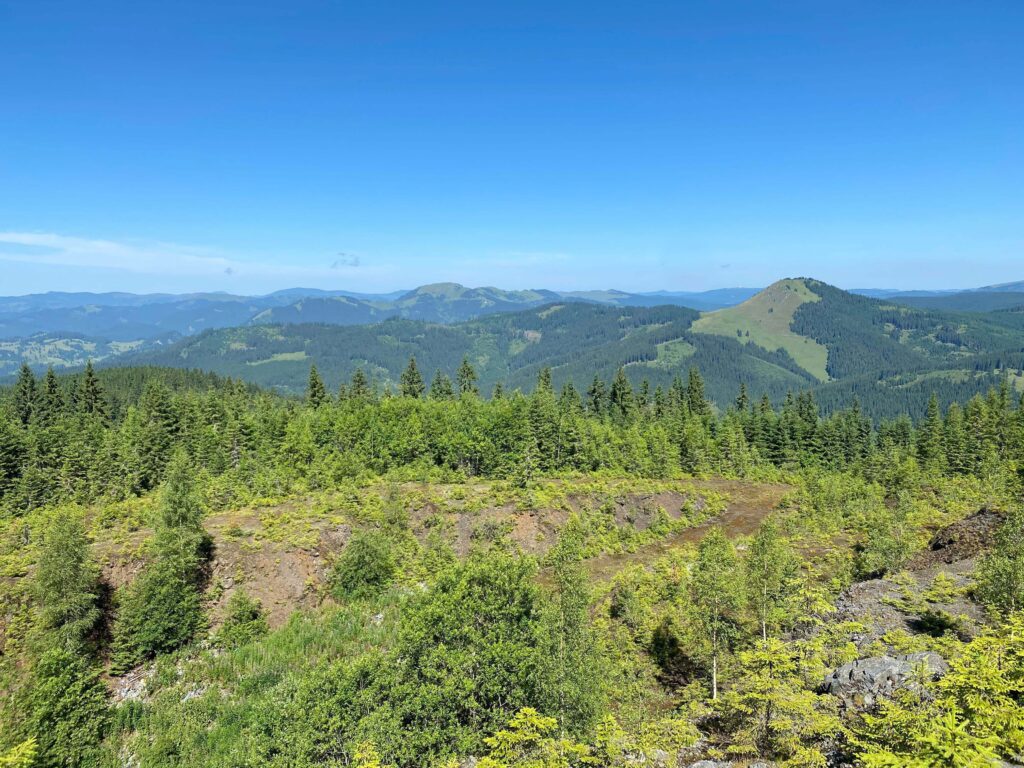

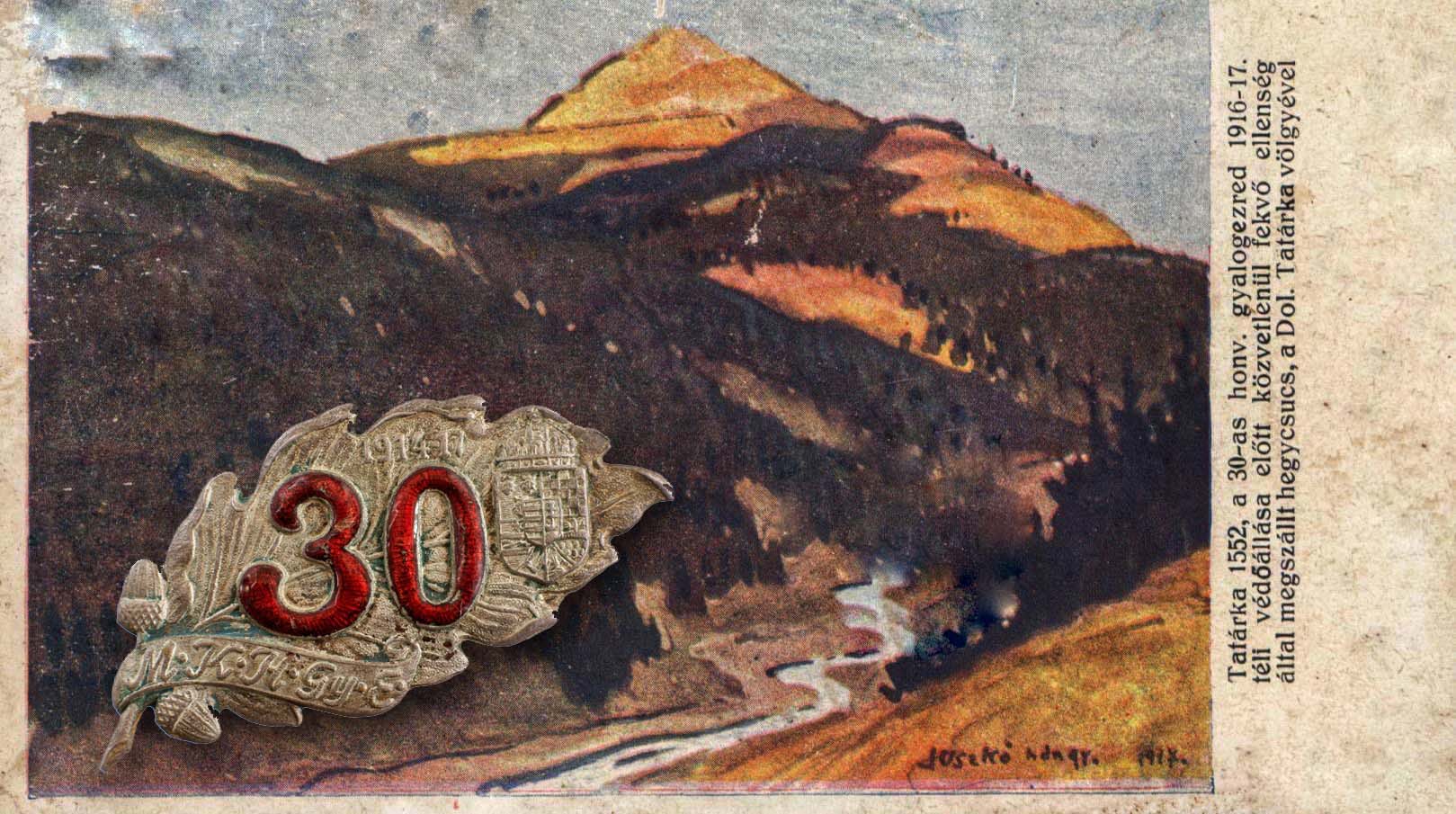

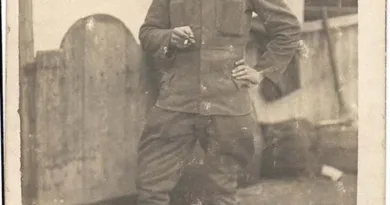
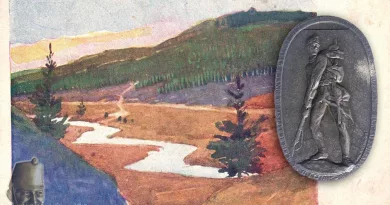
[…] a previous post, I also described the regiment’s 1916 battles in the Carpathians (here). In the summer of 1916, the regiment’s task was to stop Russian attacks that threatened the […]